Many organizations just see a policy manual as that one binder everyone has, but no one has actually read too closely. (Sort of like that copy of To Kill A Mockingbird from high school.)
And the promise we make ourselves about updating policy manuals is just like the promise about reading policy manuals: You'll get to it when you have the time, but you're already so busy, you don't know when that's going to be. But soon. Someday.
Unfortunately, this attitude can result in major safety and legal issues, and even compromise your reputation. If you don't update your manuals and enforce the policies you have in place, you face bigger problems.
For example, in 2009, a major Arizona police department had issues when its officers weren’t following the department’s immigration policy.
At the time, the Arizona Republic newspaper found that officers were failing to comply with a year-old policy that let them question people about their immigration status during certain traffic stops. Police officials said they believed that any non-compliance with the rule was a matter of ignorance of the rule, not blatant disregard for it. As a result, the department ordered additional training for its officers on how the new policy was to be implemented.
Because the department originally didn’t enforce its policies well, they faced a major violation. The resulting lawsuit cost the department much more than simply managing its policies would have. Plus, the legal issues put the department’s name and reputation in jeopardy.
Of course, every situation is different. There's no real way of knowing the root cause of a specific department’s compliance problems or why officers aren't following a new policy. But, in the Arizona department's situation, had its leaders communicated better and provided more training, they could have prevented major problems.
You can do the same.
From having employees sign off on policies, to receiving training and watching training videos, to testing each person's understanding, there are various ways you can ensure full compliance with your organization's policies and procedures.
As you develop your policies, here are a few things to consider.
Creating your company policies
Writing your policy and procedure manual is not something one person can (or should) do by themselves, and you can't do it in a vacuum. Your biggest, most important goal is compliance with all necessary laws, regulations, and accreditation that affect your industry or your occupation.
That means you want to not only hire or appoint a policy coordinator, you need a full policy committee to help you manage the entire process.
You also want to involve subject matter experts, stakeholders in the creation of your various policies. Work with your frontline employees who are affected by the policies; they may know more about how the policies should work and what they should involve. You should also enlist the help of Human Resources, and even bring in an attorney who is familiar with local, state, and federal laws.
Covering all your bases and having the right people on your team will drastically reduce your liability risk because you'll have created the best possible policies. Also, be sure to research other organization's policies and borrow from similar organizations in your field. There's no point in reinventing the wheel.
Policy management isn’t just about what you write though; the way you communicate those policies matter just as much as what's in them.
Once you have written your policy manual, the next important step is making sure it's properly distributed and easily accessible.
Distributing your policies to your employees
The next step to effective policy management is to distribute the policies to your team.
If you want your employees to understand the policies, they have to have ready access to them. Paper manuals in 3-ring binders may have worked in the 1990s, but we're 20% of the way into the 21st century: We have better methods of accessing information, and you can avoid ever having to print a paper manual again.
After all, compliance doesn't just happen in the office. Your people need to have access from anywhere, whether they're out in the field, working remotely, or are "deskless" during the course of their work.
The right policy management software can meet all your distribution and access requirements. Your policy manual is centrally located in the cloud, it's accessible to anyone with the right login information, and it can be accessed from any kind of computer or mobile device.
It's also secure, can be easily updated, and you can automate a lot of its functions, including whether employees have acknowledged reading their policy manuals.
Securing employee signatures
Distributing your policy manuals isn't enough to protect your organization from litigations or penalties either though. You actually need your employees to sign off on each policy.
Remember the Arizona police department that had to provide additional training because their officers weren't enforcing a new policy? While the software didn't exist in 2009, we now have policy software that lets you notify employees about new policies and updates, and even requires them to acknowledge the new content with a signature.
But keeping track of physical signatures and ensuring people have actually read the policies is not only a waste of time, it's a waste of paper and other resources.
With the right policies and procedures software, you not only can distribute your policy manuals and provide easy access, you can also have your employees electronically sign off on the most recent version of every document.
You can even automate this process and have the software send out reminders to employees if they are approaching the deadline for gathering all signatures.

Updating your policies on a regular basis
Speaking of updating your policies, this is something you should do on an ongoing basis. You can't just let policies sit and stagnate, assuming they're sacrosanct and can never be changed.
Laws, regulations, licensing requirements, and industry best practices are always evolving, so your policy documents should change as well.
Policies are living documents that continue to grow and change, which means your policy and procedure management should be an ongoing effort. And by regularly updating your policy manual, you can ensure your policies will meet the latest compliance requirements.
Of course, as you make these changes, you need to find a way to communicate these updates with your employees. This is where policy management software can help: The right software can show people where existing policies have been updated so it will call attention to these new changes.
You can manage your policies through their entire lifecycle, from birth to retirement, with an online management tool. And you can have people acknowledge all new content and changes with a digital signature just by logging into the software.
Training your employees on policies
Just like we saw in our example above, the greatest policies in the world aren't very effective if people don't know how they work. So you need to train your employees on how they work. That also means ensuring they actually understand and retain the information you've given them.
With an online policy management tool, you can streamline your training efforts, which makes it simple for everyone. Employees can do their training on their own time and pace, so there are no scheduling issues. Plus, hosting online training will also help you save money on instructors, materials, printing, and classroom expenses.
But don't take our word for it.
PowerDMS makes it easy to create courses (Material, PowerPoint, Test, etc.) for personnel to complete at their convenience, thus freeing up more time for hands-on training.
- Training Coordinator, Orlando PD
Testing your employees on policies
To make sure your employees understand your policies and have paid attention to their training, consider testing your employees on what they learned. Again, this is something a good policy management software platform should be able to handle.
There are many benefits to testing, both for you and your employees. An online training platform lets you create custom tests that measure the impact of your own training content. You can create tests around your content that measure specific information.
You can measure your employees' results to find any confusing information or gaps in the training. You can also see where you need to be more strategic about how you communicate the most important information.
When you know what information your staff understands and what they don't, you can improve your own training methods and increase their knowledge.
Changing your approach
While all of this information that we've given you will certainly improve your organization's compliance efforts, compliance happens from the inside out. That's why getting your leadership to think about policies and procedures differently is the most important part of managing the process.
If you, as a leader, value and comply with your policies, your employees will be more likely to follow your example.
An organization's culture starts at the top, which means it's your responsibility to both enforce and comply with the policies you created.
Policy management is an investment of your organization's time and resources. It may take a concerted effort to manage your policies, especially because they'll change frequently. But by making an executive commitment to ensuring compliance throughout the organization, you're doing you and your employees an important favor.
Not only will policy management help reduce litigation risk and protect your organization's reputation, it will make your operation run more smoothly, and create a safer and more enjoyable workplace. Learn more about policy management here.
To learn more about PowerDMS' policy management and training software platform, please visit our website and schedule a demo.

